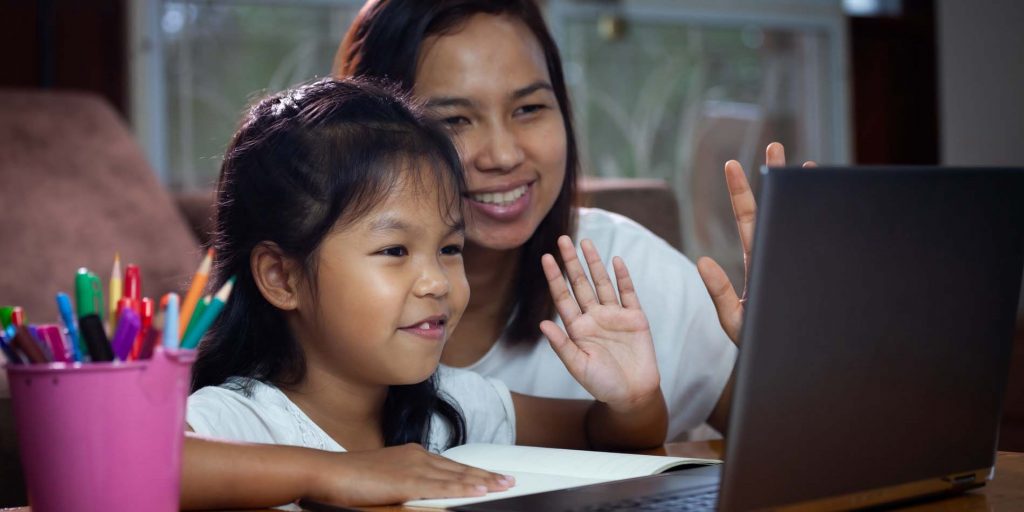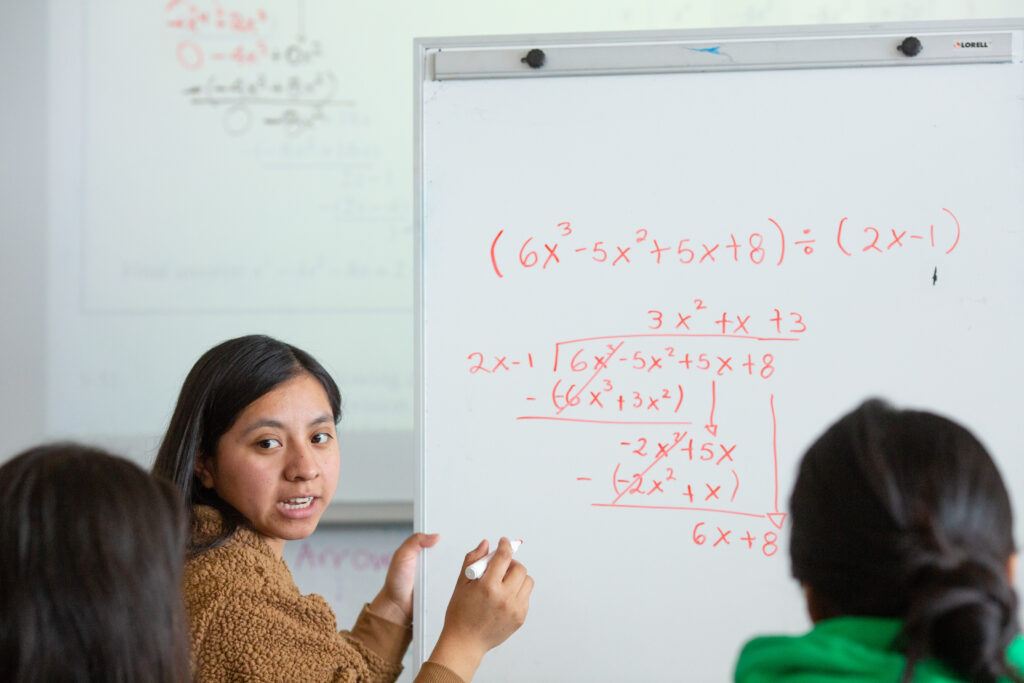Joseph Hernandez, a 15-year-old student living with Down syndrome, has always had difficulty with what many would consider ordinary learning activities. The San Jose, Calif., teen is unable to read and relies on occupational and speech therapy for a multitude of social, physical and learning needs—a situation that became vastly more challenging when the pandemic hit.
“After six months of distance learning, he began doing virtual one-on-ones for a limited amount of time,” said his mother, Maura De La Torre. But the online experience still required tasks he was unable to do, like reading from a computer screen. “This type of teaching is not working for him,” she said.
De La Torre and her family were among nearly 80 San Jose households who participated in “Build Together, Learn Better,” a series of workshops that brought technology workers and education leaders together with local families of students with special needs who have been struggling with remote learning. The online gatherings gave the predominantly Spanish-speaking families space to share the difficulties they’re facing—and a chance to work with educational technologists in conceiving new ideas and tools expected to be useful well beyond the pandemic.
The series, which took place over three months at the end of 2020, was organized by Stanford Graduate School of Education (GSE) and Innovate Public Schools, an advocacy organization working with families in Los Angeles and the San Francisco Bay Area to realize more equitable public school systems for marginalized students, particularly those who are Black, Latinx, low-income or English learners and students with special needs.
The workshops were among the activities of Stanford’s Transforming Learning Accelerator, a university-wide effort to bring innovative learning solutions to those most in need.
“This was an experiment in action—to look at lived realities from new points of view and forge solutions that work,” said GSE professor Elizabeth Kozleski, co-director of the GSE’s initiative on Learning Differences and the Future of Special Education. “We built a community among people who hadn’t come together before to try and find ways to jump over some of the barriers that families are experiencing.”
A bilingual space for discussion
More than 10 percent of students attending public schools within San Jose Unified School District (SJUSD) boundaries have been diagnosed with a disability, and a quarter of students in SJUSD boundaries are English learners, according to California Department of Education student enrollment files.
Nearly three-quarters of the families participating in the workshops indicated that Spanish was their primary or only language. With the organizers’ goal of fostering deep conversation among the families and the technologists, full translation was a top priority.
“We set out to create a bilingual space for meaningful discussion between people who have different positions or roles in the community,” said GSE alum Joanna French, MA ’19, now associate director of research and policy at Innovate Public Schools. “Spaces like that just don’t exist. In school board meetings, parents can join and listen in to a translated line, but they can’t interact. The experience we created was unusual.”
The organizers chose consecutive translation for the event—where English speakers pause after several sentences as an interpreter translates the preceding passage in Spanish—rather than simultaneous translation, in which interpretation runs on a dedicated line in real time. While the former is more time-consuming, the choice ensured that families could participate regardless of their technological capacity. Importantly, it also gave participants who don’t understand Spanish more empathy for non-English speakers’ experience of feeling left out.
“The task is not to offer tutorials”
In the first session, families gathered in breakout rooms to share their frustrations and difficulties with tech employees, who were tasked only with listening. In the second session, all participants worked together to brainstorm possible technology solutions. The conversations were facilitated by GSE staff and student volunteers.
Kozleski noted that it was understandably tempting for the technologists to jump to the conclusion that families just need more training with particular platforms or software. But that approach, she said, would miss the point.
“We need to understand why the virtual spaces we’ve created don’t necessarily account for human beings being human,” she said. “The task is not to offer tutorials for the tools that exist. The task is to figure out why the tools don’t work for these families.”
She also emphasized a focus on “disruptions”—new tools that depart radically from current practice—rather than “remedies,” interventions that could be implemented with existing resources or technology.
Remedies might involve using more interactive features on a teaching platform or taking better advantage of apps to streamline communication between teachers and families. Disruptions, on the other hand, could involve developing new augmented or virtual reality tools that help students interact with one another, or creating an artificial intelligence tool to track when students are engaged with what’s on their screen and provide just-in-time information to sustain their attention.
“We had the ambitious goal of going beyond remedies or quick fixes,” said Kozleski. “We wanted our technology partners to generate new ideas, disruptive ideas, that would breach the boundaries of what’s currently possible.”
Designing “for the edges”
Some technologists at the event were drawn to participate because of their own experiences with learning differences.
“I have dyslexia and struggle with reading every day,” said Paige, a software engineer at YouTube who prefers that her last name not be used out of concern for how her career might be affected in the future. “I need my computer to talk to me while I’m writing code.”
She required accommodations throughout high school, college and grad school, even while interviewing for her job at YouTube. “I was not an average student, and I never felt like I fit in while learning.”
She recalled a story about a U.S. Air Force lieutenant who led an effort to redesign cockpits so that, rather than positioning controls and pedals for the so-called average pilot’s measurements, they would be designed for “the edges,” or the extremes, to make sure all pilots had full and safe access. The same is true for educational tools, she said. “We need to design learning for the edges, not for the average student.”
Pushing forward
In the final session of the series, technologists gave five-minute presentations about what particular new tools might look like and solicited feedback from families.
De La Torre, who worries about her son’s isolation and difficulty learning during the pandemic, said the convenings brought some hope. “The experience brought us together,” she said, “and hopefully it will bring solutions.”
Kozleski plans to continue working with companies and other participants whose commitment and ideas held strong promise.
The organizers are also analyzing the experience for a research study, led by Kozleski with a team that includes French and Kelly McKenna, managing director of the GSE’s initiative on learning differences. Kozleski hopes the findings will help inform policy recommendations to support not only what families are currently facing but the shape schooling takes after the pandemic has subsided.
“We’re never going back to business as usual,” she said. “And we’re still at the dawn of the digital age. This work can really change how access is defined.”



